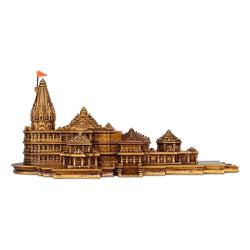Abstract, Navratri (Sanskrit nava = nine, ratri = nights) is one of the most widely observed Hindu festivals. Across nine nights and ten days it celebrates the Divine Feminine (Shakti) in multiple forms, marking seasonal cycles, ritual renewal, and the mythic victory of good over evil. This article pulls together scriptural sources, regional practice, ritual detail and contemporary perspectives to explain why Navratri is observed, how it is lived across India, and what it means today. Key primary and authoritative secondary sources are cited inline.
1. What Navratri commemorates
Navratri honours the goddess in her many forms (often identified with Durga, the Mahādevī, or the universal Shakti) and commemorates her destruction of demonic forces that threaten cosmic order. The festival is a ritual and seasonal re-staging of the victory of Dharma (righteous order) over Adharma (chaos/evil), and is also bound up with agrarian cycles and personal spiritual discipline. Encyclopedia Britannica+1
2. Scriptural and mythic foundations
The Devi Mahātmyam / Durga Saptashati
The best-known textual source connected to Navratri is the Devi Mahātmyam (also called the Durga Saptashati), a 700-verse section of the Mārkaṇḍeya Purāṇa. It narrates several episodes in which the Goddess (Devi) assumes fierce forms to destroy demons — most famously the battle with Mahishāsura, the buffalo-demon. The Devi Mahātmyam frames the Goddess as the dynamic energy invoked by the gods to restore cosmic balance; the three major episodes of the text are regularly recited in many Navratri observances.

Fig: Devi Mahatmyam- Moolam (Malayalam)
Shakti and Shaktism
Navratri’s theology rests on the concept of Śakti — the feminine creative power or energy that animates the universe. Within Shaktism this energy is not merely an attribute but often the supreme reality. Worship during Navratri is therefore both mythic (Durga’s victories) and theological (reverence of Śakti as the principle of creation, preservation and destruction). Encyclopedia Britannica+1
3. The principal myth: Durga and Mahishāsura
According to the Devi Mahātmyam and later retellings, Mahishāsura received a boon that no god or man could vanquish him. When he rampaged across the worlds, the gods combined their powers to manifest a warrior goddess—Durga—who fought him for nine nights and killed him on the tenth day. These episodes are ritually re-enacted through recitation, iconography, and community drama (e.g., Ramlila and tableaux in different regions). The nine nights therefore symbolize stages of the cosmic battle and inner transformation. Devi Mahatmya+1

Fig: Chapter 3: The Slaying of Mahiṣāsura (Devi Mahatmyam)
4. The nine days and the Navadurga
Traditionally each day of Navratri is dedicated to one of the Navadurgā (nine manifestations of the Goddess). The commonly listed sequence and their broad symbolic associations are:
-
Śailaputri — strength and roots;
-
Brahmacharini — austerity/devotion;
-
Chandraghaṇṭā — courage and beauty;
-
Kūṣmāṇḍā — creative energy;
-
Skandamātā — motherhood and nurture;
-
Katyāyānī — warrior aspect;
-
Kālarātri — fierce destroyer of ignorance;
-
Mahāgaurī — purity and renewal;
-
Siddhidātrī — bestower of spiritual accomplishment.
This schema is widespread in ritual manuals and vernacular devotional guides for Navratri and is used to structure daily worship, iconography and meditative themes. Drik Panchang+1
5. Regional forms and social life of the festival
Navratri is remarkably diverse in practice. A few major regional patterns:
- Eastern India (West Bengal, Assam, Odisha) — the festival overlaps with Durga Puja, a public, artistic celebration centred on sculpted Durga images (often displayed five days), elaborate pandals, community feasting and cultural programmes. The emphasis is on the goddess’s homecoming and public worship.

Fig: Goddess Durga Statue
Credit: Wikipedia
- Gujarat and parts of Maharashtra — Navratri is synonymous with garba and dandiya-raas (circle dances and stick dances), communal devotion expressed through rhythmic music and choreographed group dance. These gatherings function socially as well as spiritually.

Fig: Garba
Shop Dupatta
North India — Navratri is often observed alongside performance traditions of Ramlila; on the tenth day (Dussehra / Vijayadashami) effigies of Ravana are burned to mark Rama’s victory, blending Durga and Rāma narratives in popular imagination.

Fig: Ramlila
Credit: Wikipedia
Shop Taragram eco friendly lord Ram statue
- South India — households arrange Bommai Golu (doll displays) and focus on worship of Sarasvatī and Lakṣmī alongside Durga, with rituals emphasizing learning, craft and domestic devotion.

-
Fig: Bommai Golu
Picture credit: wikipedia
These regional practices show that Navratri is not a single ritual script but a constellation of related observances centered on the Divine Feminine.
Some rituals, observances and their meanings
Fasting and dietary discipline
Many devotees observe fasts (vrata) of various strictness across the nine days, favouring sattvik foods (fruits, milk, select flours and root vegetables) and avoiding grains, onion, garlic, meat and alcohol. Fasting has devotional aims (sankalpa, self-discipline) and — according to Ayurvedic and recent health analyses — can also have physiological effects that people describe as detoxifying or rebalancing (note: contemporary health claims are being actively studied). Hindustan Times+1
Kalash Sthāpana (ghat/stūpa installation)
Many households and temples begin Navratri by installing a kalash (a consecrated pot) that symbolizes the presence of the Goddess and acts as a focal point for daily worship. The kalash ritual invokes abundance, purity and the deity’s presence in the home.

Fig:Kalash
Credit: Getty Images
Kanyā Pujā / Kumārī Pujā
On the eighth or ninth day, a common ritual is Kanyā Pujā, where nine pre-pubescent girls (kanyās) are honoured and worshipped as living manifestations of the Goddess. This practice affirms reverence for the feminine principle and social values attached to blessing and hospitality. Contemporary discussions around Kanyā Pujā also engage with child protection and respectful practice.
Community arts and drama
Public recitations of the Devi Mahātmyam, staging of episodes from the Rāmāyaṇa (Ramlila), and large-scale processions (especially in Bengal and parts of North India) are central to the festival’s communal dimension. Dance (Garba/Dandiya) functions as devotional offering and social theatre.
Navratri’s seasonal and psychological symbolism
Two Navratris are observed each year—Chaitra (spring) and Sharad (autumn), the latter being the more widely celebrated. The timing ties the festival to seasonal change: sowing and harvest cycles, preparation for cooler months, and community re-ordering after monsoon. Psychologically, the nine nights are often interpreted as stages of inner work—cleansing, activation and illumination—mirroring the Goddess’s progressive forms.
Contemporary continuities and debates
Navratri remains vital for its adaptability: it combines scripture, folk drama, community performance, personal discipline, and civic spectacle. Modern conversations address:
-
Commercialization vs devotion: large public pandals and corporate sponsorships have increased visibility but also raised questions about commodification of ritual.
-
Gender and social values: while Navratri elevates the feminine principle, social practice sometimes contrasts with everyday gender inequalities — a tension explored by scholars and activists.
-
Health and lifestyle: interest in the fasting practices of Navratri has prompted research into potential metabolic and psychological benefits; however, medical guidance is advised for people with health conditions.
Navratri is at once an ancient scriptural tradition and a living cultural process. Its tradition that bridges mythology, ritual, and community. At its heart lies the celebration of Śakti—the feminine force that creates, protects, and transforms. The nine nights are not only about devotion; they are about renewing our bonds with one another, aligning with the cycles of nature, and carrying forward practices that give meaning to life.
In contemporary times, the spirit of Navratri also invites reflection on how cultural traditions can continue while honoring the health of the planet. Just as the festival teaches balance between divine and human, devotion and discipline, it also reminds us of the balance we must keep with the environment that sustains us. The continuation of rituals, crafts, and celebrations in ways that respect both heritage and ecological well-being ensures that Navratri remains not only a story of victory over darkness, but also a path towards a more sustainable future.
For those who wish to celebrate in this spirit, Taragram offers eco-friendly festive essentials that carry tradition forward the sustainable way—whether it is a handcrafted Ram idol, a Kalamkari dupatta, or other festive pieces. With every product sold, 5% of the revenue supports sustainability initiatives, ensuring that devotion and care for the planet go hand in hand.
Sustainably yours, since 1985.
Select bibliography & primary sources (recommended reading)
-
Devi Mahātmyam (Durga Saptashati) — translation and editions (see English translations and the original Sanskrit text). Devi Mahatmya+1
-
Encyclopaedia Britannica — entry on Navaratri and Shakti. Encyclopedia Britannica+1
-
DrikPanchang — practical notes on Navratri rituals and rituals’ calendar placement. Drik Panchang
-
Times of India / regional cultural reporting — on Durga Puja / Navratri practices. The Times of India
- Recent analysis on fasting and Ayurveda in festival practice (health perspectives). Ayushdhara+1





